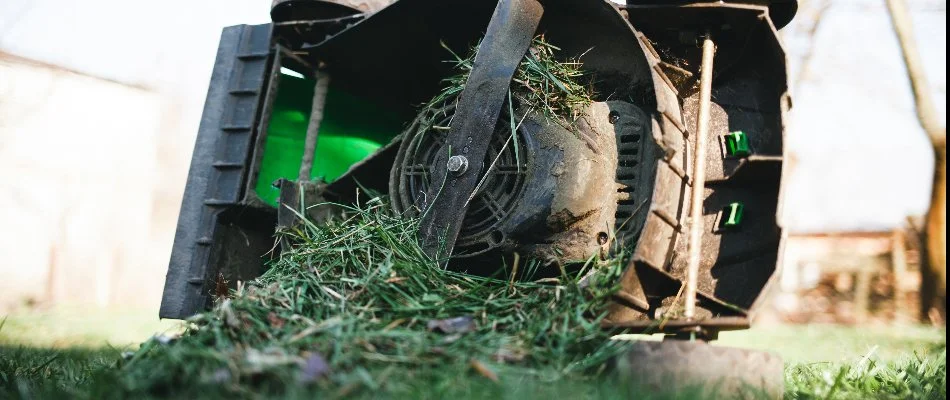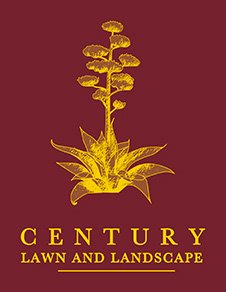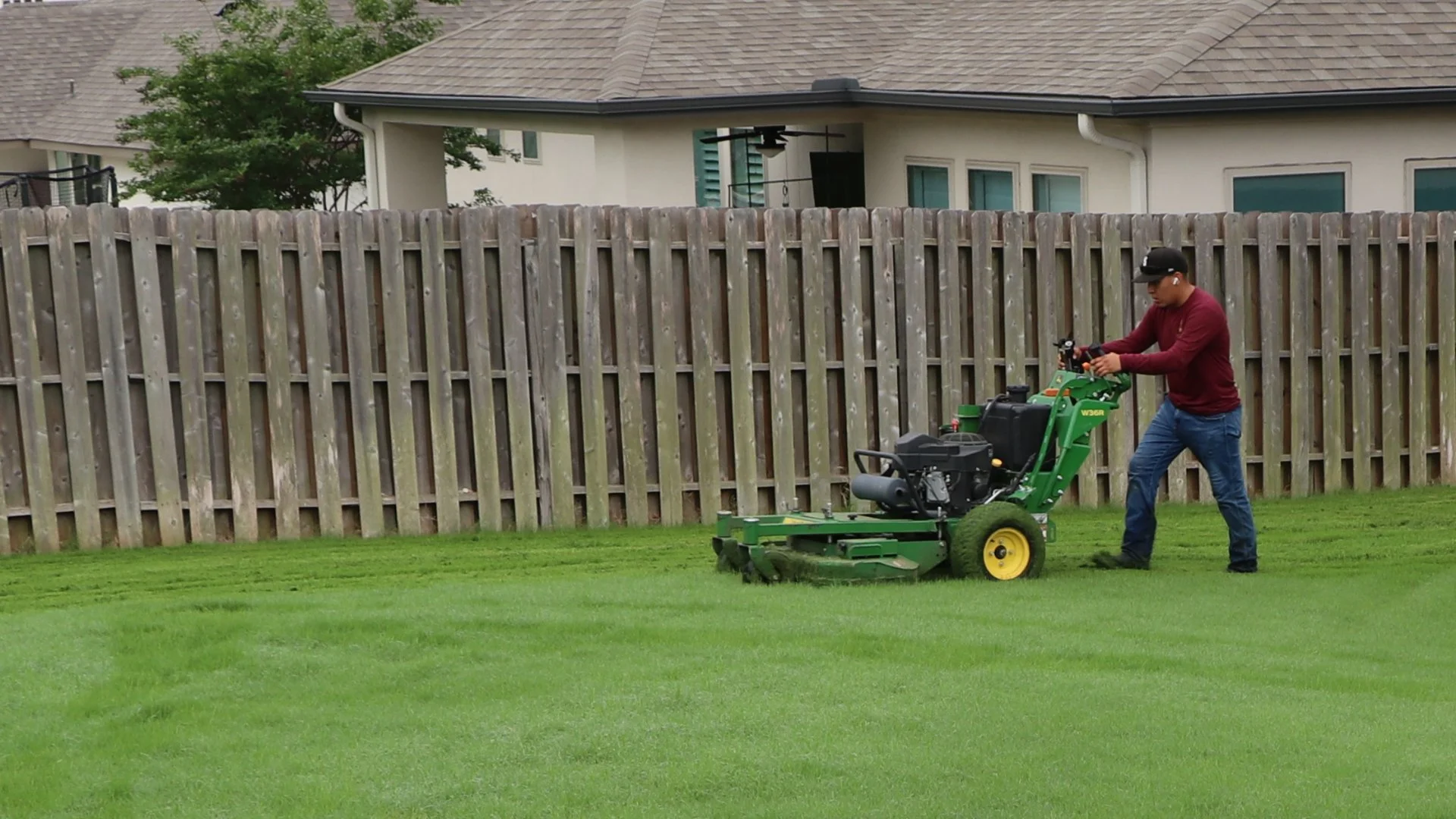Lawn mowing is a year-round maintenance task that keeps your grass in Texas looking neat and manicured. However, it's important to remember that you should never mow your lawn right after it rains as it can cause a bunch of problems. When you mow your grass after it rains, the wet grass clippings can clog up your mower and cause it to malfunction. The weight of the lawn mower can also cause ruts in your soil and create an unsightly appearance in your yard if you mow when your lawn is wet. It's tough to create a clean cut on the grass blades when the grass is wet, resulting in tears and an uneven cut. What's more, mowing after it rains is an easy way to spread fungal diseases throughout your turf!
You can clog up your lawn mower when you cut your grass after it rains.

After rain, grass blades become heavy when wet and can clump together. When you mow your grass when it is still wet, your lawn mower can get clogged. A clogged lawn mower can overheat and turn off, stopping you from finishing your mowing! In a worst-case scenario, your lawn mower might not function at all and require costly maintenance to get it running again.
Mowing Right After It Rains Can Cause Ruts in Your Soil
The soil after rain is soft and soggy. When you try to mow right after, the weight of the lawn mower can cause ruts to form in the soil! Ruts are unsightly wheel marks in the soil that can make your lawn look poorly maintained. What's more, ruts also cause soil compaction. When the soil is compacted, nutrients that your grass needs to thrive will have a hard time penetrating the soil and reaching the roots. This can affect your lawn's health and stunt its growth.
You won't get a clean cut on the grass blades if you mow when it's wet.
You should avoid moving your lawn right after it rains because it's difficult to get a clean cut on the grass blades. Rain droplets can weigh down the blades, which means they are leaning and not standing upright as they would when dry. When you try to mow grass blades that are bent or leaning, the lawn mower will be unable to reach all the grass blades, resulting in an uneven cut.
Ripping or tearing the grass blades is also a risk when you try to mow after it rains. When mowing, you want to create nice, clean cuts on the grass blades because tears invite diseases and can cause discoloration.
Fungal diseases can easily spread when you mow after it rains.
One of the risks of mowing your grass right after it rains is the easy transmission of fungal diseases throughout your lawn. Many lawn diseases, like brown patch and dollar spot, thrive in humidity and moisture, which are present after rain. Grass clippings that have the disease will stick to your mower and easily scatter to other unaffected areas! When you try to mow your grass after it rains, the risk of spreading any fungal diseases through your lawn mower is higher!
Give us a call today to sign up for our lawn mowing service!
Lawn mowing may sound like a straightforward task to do, but it entails a rigorous schedule and proper timing to get the best result for your grass. Let our team at Century Lawn and Landscape handle your lawn maintenance needs! We offer our lawn mowing service to residential properties in Austin, Bee Cave, Dripping Springs, TX, and surrounding areas. This service is available as part of our lawn fertilization and weed control program, so your grass stays healthy and lush all year round. Give us a call today at (512) 786-1694 to sign up!



Comments (0)
Thanks for your comment!
Thanks for your feedback! Your comments have been successfully submitted! Please note, all comments require admin approval prior to display.
Error submitting comment!
There is a problem with your comment, please see below and try again.